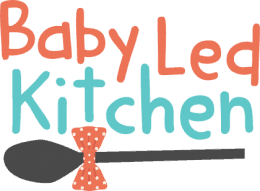Why Baby Led Weaning?
with BLW, babies learn to chew before they learn to swallow. They quickly develop the skills needed to feed themselves. They learn to eat when they are hungry. They begin to enjoy a vast range of tastes and textures. All these skills stand them in good stead for maintaining a healthy diet and attitude to food for life. Feeding another human is a huge responsibility for parents; take off some of the pressure by letting your baby take the reigns.
I must tell you that I am not a health professional or dietician. If we are giving our babies the freedom to explore food in this way it is really important to make sure that we are following guidelines for safe weaning. Whilst it is a very flexible way of feeding, they are a few dos and don’ts.
Please read all of the information below before starting Baby Led Weaning.
Signs a baby is ready to begin solids
(taken directly from the NHS website):
- They can sit up and hold their head steady
- They can co-ordinate their eyes, hands and mouth so that they can look at the food, pick it up and put it in their mouth all by themselves
- They can swallow food. Babies who are not ready will push their food back out, so they get more round their face than they do in their mouths.
Usually these things happen at around 6 months, but it might be that your baby is ready a little earlier or later.
Foods to avoid
You only need to steer clear of the following:
- Honey (before 12 months)
- Whole nuts
- Any food that is a family allergen
- Added salt (babies have a limit of 0.4g of sodium a day)
Guidelines For the Baby-Led Weaning Approach
Gill Rapley’s guidelines are particularly helpful. Dr Rapley actually coined the term ‘Baby-Led Weaning’ and has written several books on the subject- she knows her stuff!
Click here to check out the Rapley BLW Guidelines
In summary:
- Let your baby feed him/herself.
- Give food in chunks that are large enough to be held in a fist. This is an important step as small chunks can be a choking risk
- Keep your baby upright when eating and don’t leave them alone when eating
- Offer a variety of tastes and textures but don’t worry if they just play with their food at first
- Give milk feeds on demand
- Discuss family allergies with your doctor/health visitor first
- To make things easier for yourself, try to cook meals you can eat as a family, or at least adapt for your baby, when you can.

